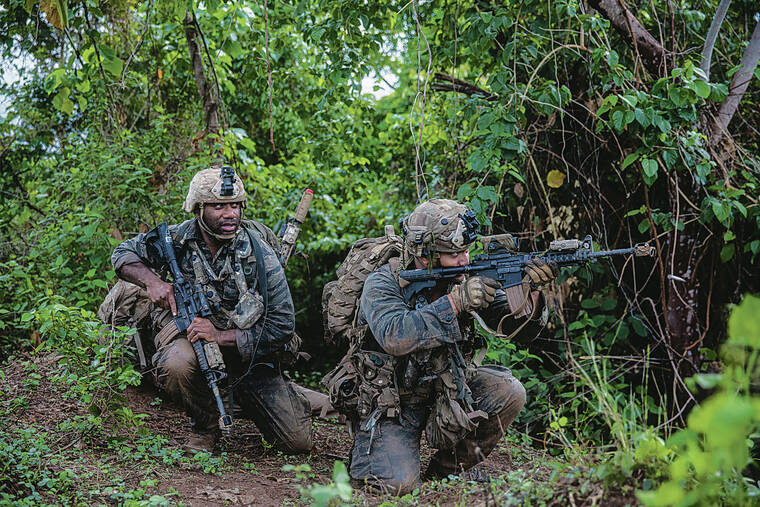Hawaii Army units help prepare Philippines in ongoing dispute
Hawaii-based Army units are continuing to play a central role in U.S.- Philippine relations as tensions mount between China and the Philippines.
On June 10, soldiers from the Schofield Barracks-based 25th Infantry Division, the Fort Shafter-based 196th Infantry Brigade and the Army Reserve’s 100th Infantry Battalion wrapped up Exercise Salaknib. The Army exercise was held in two parts, one that began in April and one in June — it was put on pause for the larger multinational Exercise Balikatan in May, in which the Hawaii troops also participated.
ADVERTISING
The latter half was run by soldiers from the 196th as part of the Army’s Joint Pacific Multinational Readiness Center, a series of training ranges in Hawaii and Alaska to prepare soldiers for Pacific deployments. The training in the Philippines was part of the 196th Infantry’s “exportable” version called JPRMC-X, which does training annually in a different Pacific country each year.
Philippine troops have trained in the Hawaii JPMRC exercises in recent years and want to develop their own version. 196th brigade commander Col. Bryan Martin said, “They call it a ‘combat training readiness area,’ and they’re trying to set one up … at Fort Magsaysay in Luzon, and it’s very much a model of JPMRC.”
On June 17, members of the Chinese coast guard brandishing axes, machetes, knives and clubs boarded Philippine navy boats and confiscated equipment in a scuffle that left a Philippine navy sailor severely injured and minus one finger. According to Philippine officials, Chinese vessels rammed Philippine military boats to stop them from resupplying troops on the the BRP Sierra Madre, a beached vessel the Philippines has used as an outpost on the disputed Second Thomas Shoal.
Filipino soldiers are training to fight a force potentially far more powerful than they have ever faced. Martin said that with JPMRC-X the goal is to “create an immersive environment that brings in all the pressures that combat against a peer adversary might bring. Or in their case, an adversary that’s infringed on their territorial sovereignty, and how do they hold them off until allies and partners can arrive to help reestablish sovereignty?”
Gen. Charles Flynn, commander of U.S. Army Pacific, has been promoting the concept of a Pacific “landpower network” and has sometimes frustrated his critics with his refrain, “People live on the land.”
Not everyone in the Philippines has welcomed these closer ties. On May 9, as Exercise Balikatan came to a close, a group of activists outside of the Philippine military’s general headquarters.




